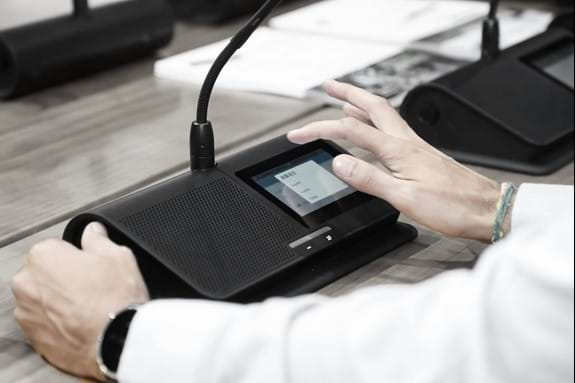The importance of audio within Government

Speech intelligibility is crucial with any video conferencing system for Government use, along with interpretation and voting functionality. Being heard clearly and understanding the message being presented is a fundamental part of the decision-making process, and good audio plays a huge part in this.
The last 24 months have seen Governments and public organisations around the world being forced to make unprecedented decisions due to the Covid-19 pandemic, as well as Brexit and severe weather conditions.
Tackling these big issues requires effective communication, 24 hours a day, seven days a week. Audio systems and video conferencing equipment must be ready to be deployed effectively and quickly, sometimes in unique meeting environments and with systems that can deal with multiple languages.
Speech intelligibility is crucial with any video conferencing system for Government use, along with interpretation and voting functionality. Being heard clearly and understanding the message being presented is a fundamental part of the decision-making process, and good audio plays a huge part in this.
Studies have found that participants who are subjected to exactly the same video conferencing presentation – but one with poor audio clarity and another with good audio clarity – are likely to be more engaged and enthusiastic with the latter.
In fact, there’s more to good audio than increased engagement levels. Research conducted by Newman and Scwarz and published in the journal Science Communication has revealed that participants of the good audio experiment believe the presenter to be more intelligent, the message more believable and the individual more likeable overall. And with many Government discussions and decisions concluded on respect, transparency and likeability, it’s understandable why clear, concise audio is an essential requirement of the day-to-day workings of the Government sector.
“The variety of spaces and their often-numerous different functions is our challenge. We have to look at the technology required and the various applications of the individuals who are using the systems,” explains Craig Collin, RSM, Shure UK. “If the technology isn’t just right then the user-experience is not as seamless as it should be.”
“With the recent shift towards a more flexible and adaptable conferencing scenario, our Microflex Complete Wireless line can give clients options and allow them the freedom to tailor the deployment in future as situations like social distancing and room capacity restrictions evolve over time. Let’s be clear here though, just because it’s wireless doesn’t mean we have to sacrifice any reliability or security. The MXCW backbone is encrypted (to AES standards, so no eavesdropping) and in use it’s constantly looking at the available wireless spectrum and adapting to changes in real-time. Users of the system don’t know this is happening but crucially they know that when they press their button to speak or vote, they will be heard and counted.
Collin continues: “Fundamentally we want to create simple, trusted solutions for our users. Only add the tech that is needed while prioritising the highest regard for audio quality in both the room itself and its remote participants. The products in the Shure Ecosystem are a prime example. We provide the complete signal chain – microphones, DSP capability and loudspeakers. Add in the desk-mounted mute button and you have a complete, secure, optimised system that integrates seamlessly with your VC platform without the need for additional outboard control systems.
“Having these two standout product lines provides solutions for all types of Government environments and use-cases. In this ever-changing world we strive to ensure that their individuals and wider contributors can continue to connect, communicate and make those effective decisions together, effortlessly.”


